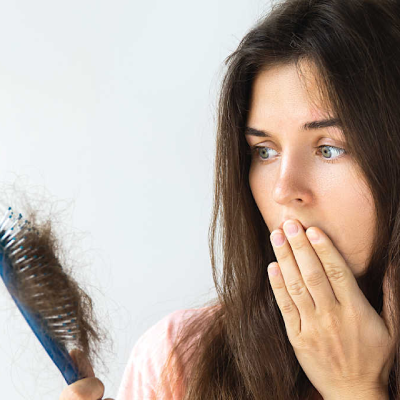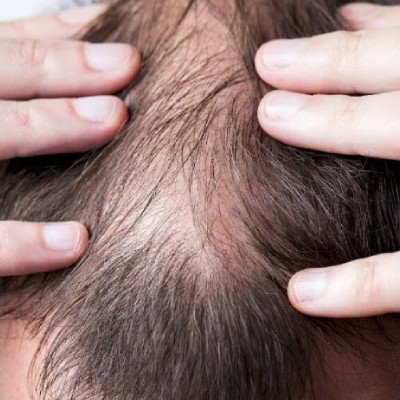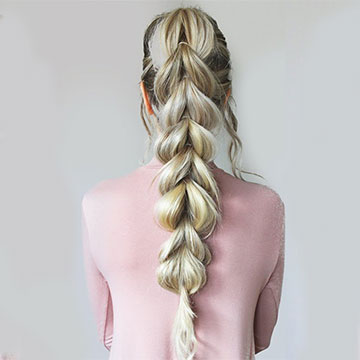Signs of New Hair Growth

15 August 2022

moneshairexperts

The follicles produce hair strands that develop in length before falling out. Once the old hair has fallen out, new hair will grow back in its place, and so on. By being aware of the physical indications of hair regrowth on your scalp, you can spot this. The average person typically loses 100 hair strands daily, but some illnesses can result in significant hair loss. The correct hair loss treatments can promote the growth of new hair.
The follicles produce hair strands that develop in length before falling out. Once the old hair has fallen out, new hair will grow back in its place, and so on. By being aware of the physical indications of hair regrowth on your scalp, you can spot this. The average person typically loses 100 hair strands daily, but some illnesses can result in significant hair loss. The correct hair loss treatments can promote the growth of new hair.
What are the Stages of Hair Growth?
Each hair follicle has its cycle of growth, which is predictable. About fifty to one hundred hairs are shed daily from the approximately 100,000 hair follicles on your scalp, indicating that these hairs are entering the exogen growth phase, the fourth stage of hair growth. With that said, here are the four phases of hair growth:
* ** Anagen Phase**The first hair development stage might last between two and six years. It is the phase of anagen. During this stage, the hair follicle's protein root begins to grow hair. Blood vessels in the scalp nourish this hair root, which in turn produces additional cells to enable hair growth. The oil gland that the hair shaft goes through as it grows hydrates the hair strand, making it silky and lustrous. Your hair typically grows in this period to a degree of 90%. * **Catagen Phase**
The hair stops actively growing during this transitory phase of one to two weeks between the anagen and telogen stages. At any given period, less than 1% of scalp hair is in this phase. * **Telogen Phase**
The resting phase is the three- to the four-month timeframe between the end of hair development and loss. * **Exogenous Phase**
This phase of the cycle, which is just recently recognised as a stage of hair growth, occurs when the hair separates from the hair follicle and releases or sheds. It enables the hair growth cycle to restart, as was already described.
What is Hair Shedding?
A few months after the stressful event, many people become aware of their severe hair loss. The increased shedding stops as your body adjusts. The hair usually returns to its natural fullness within six to nine months. However, hair loss may last a long time if the stressor persists in your life. People under stress all the time may experience significant hair shedding over time.
What is Hair Loss?
Your entire body or your scalp may experience hair loss, which may be either temporary or permanent. It could result from inherited traits, hormonal changes, illnesses, or a normal part of ageing. Men are more prone to lose hair on their heads than women, even though anyone can.
Causes of Hair Loss
Hair loss happens when new hair does not replace the hair that has fallen out. An average person loses around 50–100 hairs per day. Due to the simultaneous growth of new hair, this frequently goes unnoticed. Usually, these are the following factors that contribute to hair loss:
* **Family History of Hair Loss (heredity)**The inherited disorder that develops with ageing is the most typical cause of hair loss. It typically happens gradually and in regular patterns, with men experiencing a receding hairline and bald spots and women experiencing thinning hair at the top of the head. Androgenic alopecia, male-pattern baldness, and female-pattern baldness are the names for this disorder. * **Medical issues and hormonal shifts**
Permanent or short-term hair loss can be caused by several circumstances, including hormonal changes brought on by pregnancy, childbirth, menopause, and thyroid issues. Alopecia areata, an immune system-related syndrome that results in patchy hair loss, ringworm infections of the scalp, and the hair-pulling disorder trichotillomania, are among the medical conditions. * **Drugs and dietary supplements**
Some medications, including those for cancer, arthritis, depression, heart issues, gout, and high blood pressure, can cause hair loss as a side effect. * **A highly stressful occasion**
Many people notice general hair thinning several months following a traumatic event, whether physical or emotional. Temporary hair loss results from this type. * **Hair treatments and styles**
Excessive styling and tight-pulling hairstyles like pigtails and cornrows can result in traction alopecia, a type of hair loss. Permanent hair dye and hot oil treatments can make hair brittle and fall out. Scarring could cause hair loss to become permanent.
Signs of New Hair Growth
If you concentrate on an area of your scalp that has previously suffered hair loss or shedding, finding new hair growth is pretty simple. However, you can look for some specific signs to ensure Hair Growth:
* **Dark Spots**Part your hair and examine the scalp and hairline for any dark areas in good lighting. A shadow is a common name for these dark areas. Don't worry if you see them on your scalp. It's time to jump for pleasure! These black areas show that your hair follicles are actively growing new hair. * **Fuzz**
Peach fuzz is a common sign of fresh hair growth. The peach fuzz on your scalp is an indication of growing hair if you detect it. Due to its recent growth, this fuzz is thinner than the rest of your hair. Allow it to grow naturally with time. * **Fine and Short Hair Growth**
Observe the baby hair strands that weren't there before. Those are indications that the scalp is growing new hair. These baby hair strands will grow more quickly than usual if your scalp is healthy. That's fantastic news, but you should know that baby hair is sensitive and prone to breaking. * **Fewer Split Ends**
Congratulations if you notice fewer split ends in your hair than you did previously! It is a symptom of freshly growing hair. Only when your hair is healthy, and you take good care of it will your split ends decrease. If you can see a reduction in your split ends, whatever you have done for hair care works for you. * **Reduced Hair Loss and Breakage**
Having dry, brittle, and unhealthy hair can lead to hair loss and breaking. Up to 100 hair strands falling out per day is normal, but excessive hair loss indicates weak hair. When normal shedding takes place, the hair strand and the hair root, which resembles a little white bulb, both shed. Therefore, if you have just begun experiencing decreased hair fall and breakage, it indicates that your hair is beginning to recover. * **Stronger Hair**
Stronger hair both signals future growth and shows healthy hair growth. Growing hair strands become active throughout time, begin to increase volume, and lengthen. This latest hair growth is more robust. It's obvious evidence that your hair can now begin to grow again.
How to Grow Hair Fast?
Your hair can grow faster with some care at home with hair growth tips and remedies like regular scalp massage. If that doesn't work, consider consulting with a hair professional to understand hair regrowth treatment options. At AHS Clinic, we offer multiple hair loss treatments that suit different needs.
* Advanced Laser Therapy * Strand by Strand Ultimate/ Strand by Strand Cosmetic * AHS CompleteAll these procedures suit different needs but assure one thing: hair regrowth. Visit an AHS clinic today to get an advanced hair check and save your hair before it's too late.
Conclusion
You can anticipate six inches of hair growth in a year if your hair is healthy, which occurs at a rate of half an inch each month. With years of experience in the hair growth field, we promise you results that will live up to your expectations. You can identify new hair growth on your scalp using the indicators described above. Our professional hair experts and surgeons can help you with the best procedures for hair growth; all you need is a visit to get your scalp analysed by our consultants. Book an appointment now, before it's too late.
Stay Updated
Subscribe to our email newsletter for helpful tips and valuable resourses
Be an influencer
Join forces with Advanced Hair Studio! Explore exciting collaboration opportunities tailored for influencers. Let's redefine haircare together.
Connect now












